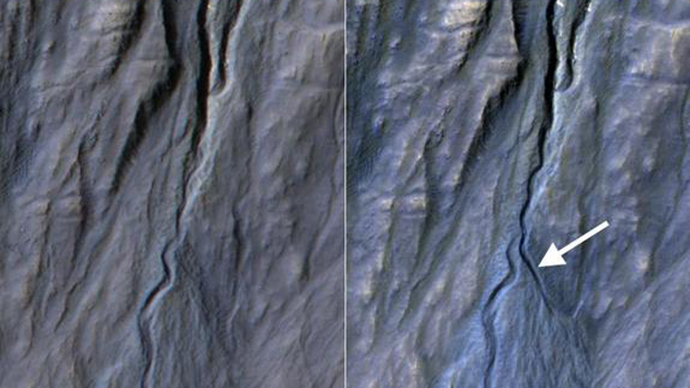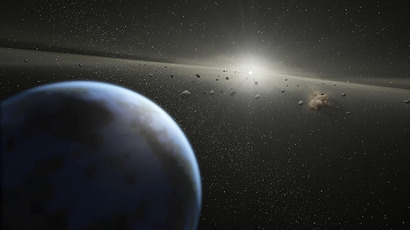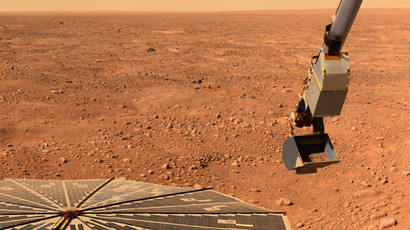Dry ice, not liquid water responsible for Martian gullies

Gullies on Mars, which scientists believed to be the result of liquid water running the surface ages ago, were actually produced by carbon dioxide, a new study showed. But the process, which cannot be encountered on Earth, is still ongoing.
Earth’s gullies are formed by running water eroding soil, so when similar geological structures were discovered on Mars in 2000, the find generated a lot of excitement. They indicated the presence of liquid water on the Red Planet – a necessary condition for life – if not today, then probably eons ago, when the climate there was more temperate.
But photos collected by NASA’s Mars Reconnaissance Orbiter (MRO) point to a different origin of the gullies. They were formed and are still being formed by carbon dioxide, which freezes in wintertime on Mars, a study published online by the journal Icarus says.
"As recently as five years ago, I thought the gullies on Mars indicated activity of liquid water," said lead author Colin Dundas of the US Geological Survey's Astrogeology Science Center in Flagstaff, Arizona. "We were able to get many more observations, and as we started to see more activity and pin down the timing of gully formation and change, we saw that the activity occurs in winter."
The team, which also included scientist from the Jet Propulsion Laboratory and the University of Arizona, used satellite images of 356 sites on Mats taken by MRO over several years starting 2006. Active formation of gullies was spotted at 38 sites, and the timing of the changes corresponded to cold seasons, when the temperatures would not allow water to be liquid.
The scientists are not quite sure how exactly frozen carbon dioxide, colloquially known as dry ice, can cause gullies to form. It simply is not encountered naturally on Earth, so there was nothing to compare the processes on Mars with. One possible mechanism is that soil sublimates frozen carbon dioxide, which allows it to flow. Another is the buildup of frozen gas causes steep slopes to slide.
The findings do not prove that there is no liquid water on Mars surface at all. Evidence of smaller flows and other features that can be attributed to water have been accumulated over the years. And evidence collected by Curiosity rover points to the existence of a cold freshwater lake some 3.7 billion years ago, where now the Gale crater is located.














